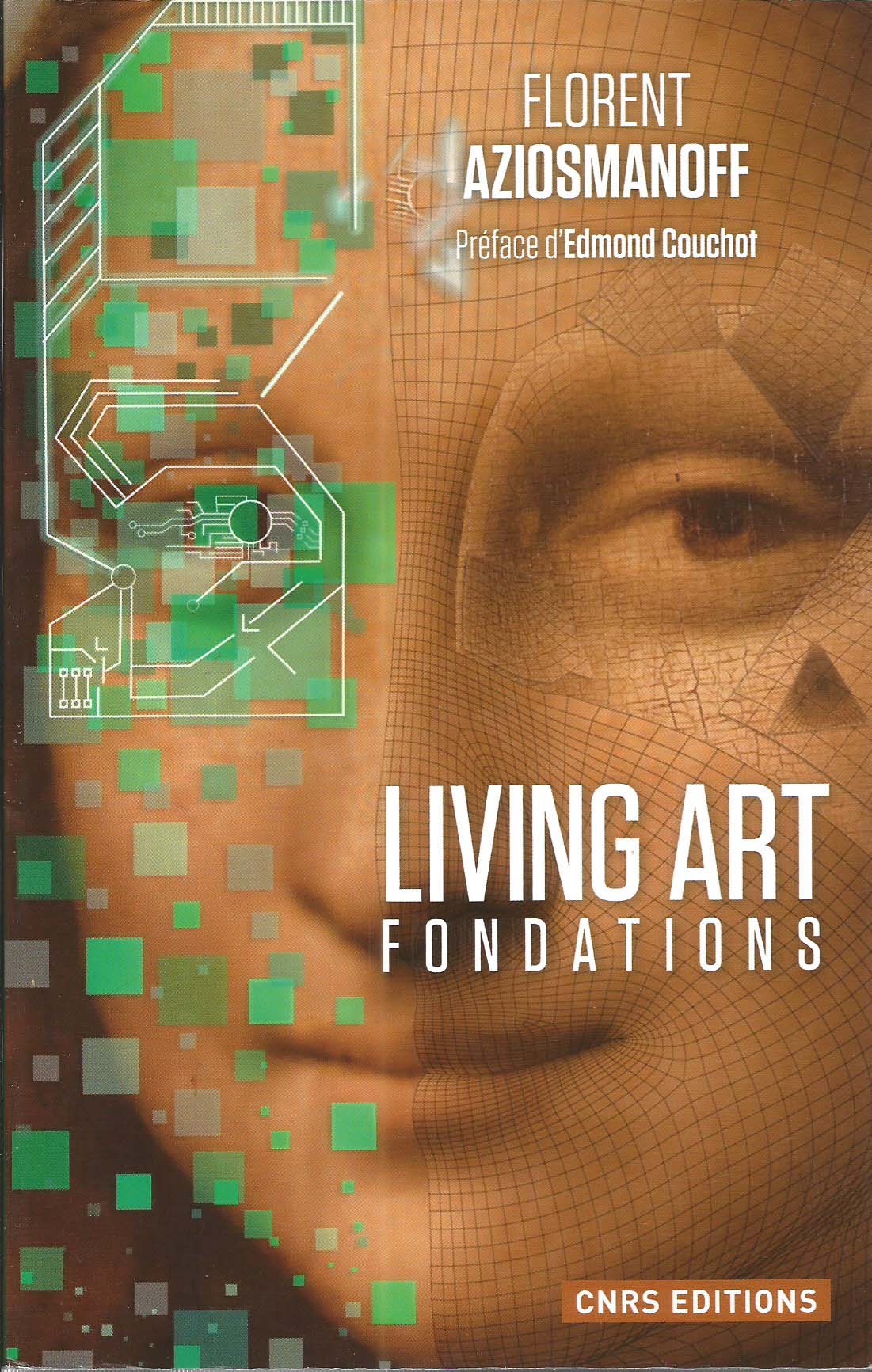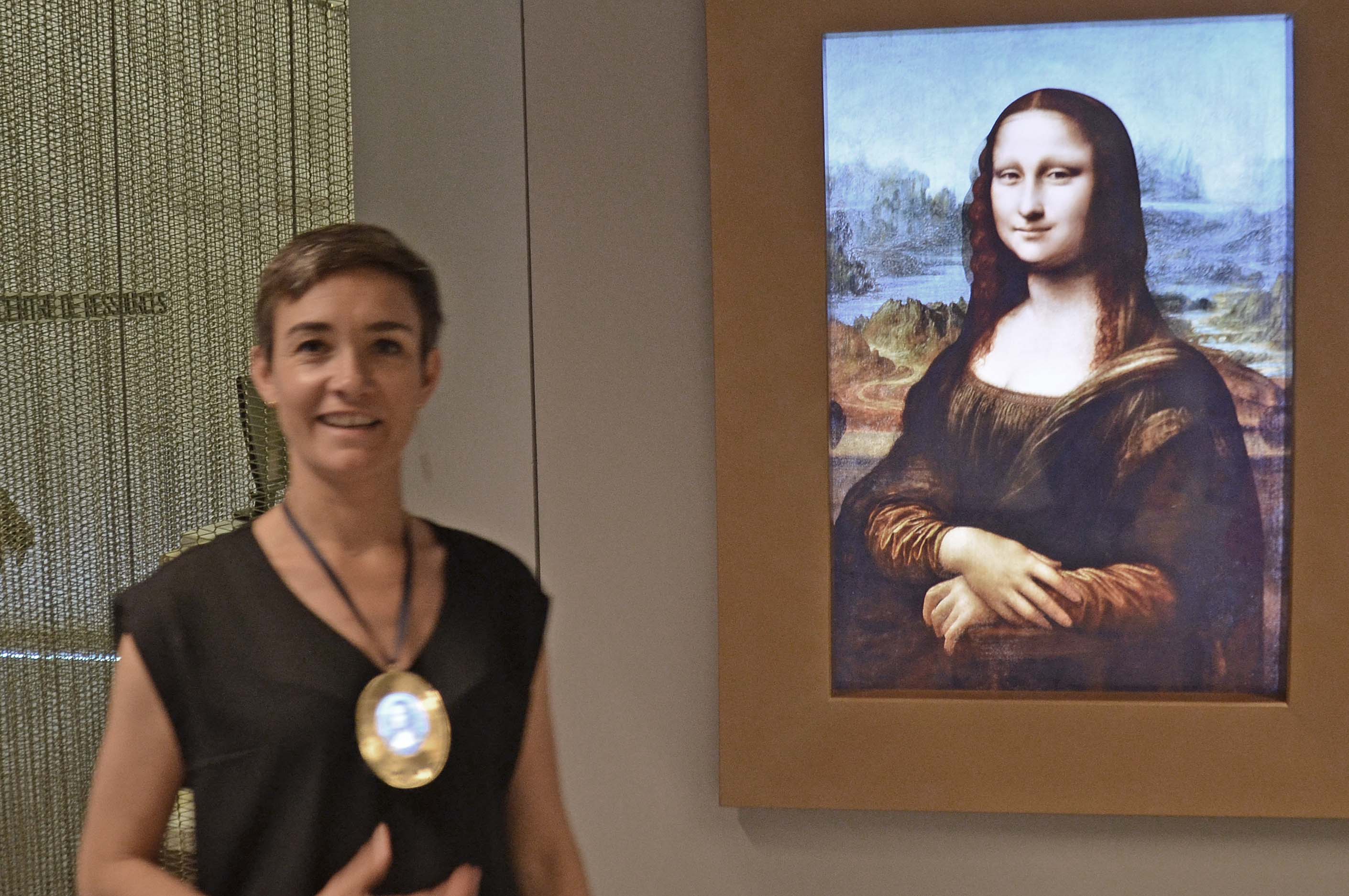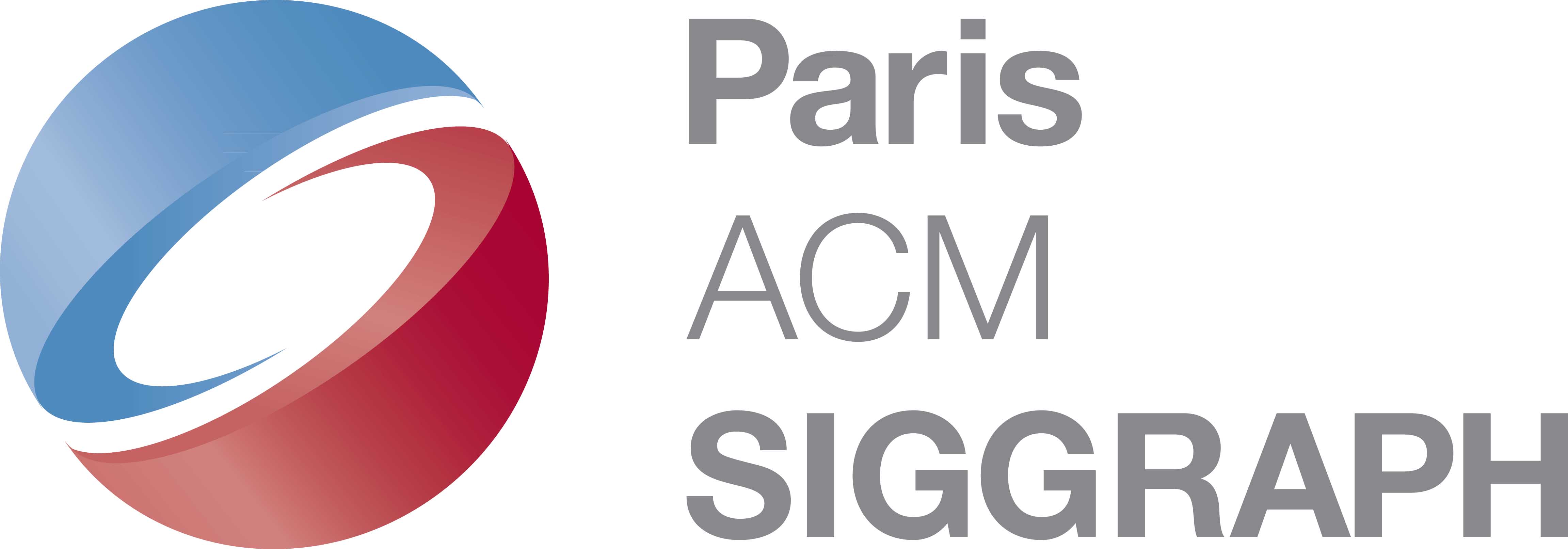Other Digital Art news in June 2015
Aziosmanoff: provocative "foundations"

You may be shocked by the core thesis of the new Florent Aziosmanoff's book [1], and be disappointed by the first public appeance of his (in cooperation with Heudin) Joconde at Futur en Seine (June 2015). But his bold steps contrast happily with the present pause of digital art (but for the come-back of VR goggles).
The book: daring bases and elaborate formal model
In short, the "substrate" of art is for him the manipulation of the spectator's behavior. "Living art" uses digital techniques to reach this goal. It designs works able to express themselsves, perceive the attitude of the spectator and behave somehow autonomously.
Since the book extends these views to industrial design if not to politics in general, it could be considered a cynical hijacking of digital art in favor of business and power. But the examples described, like Le silence n'existe pas by Isabelle Bonté, or The little Red Riding Hood, by Aziosmanoff himself [2] don a real concern for social or educative issues. And Edmond Couchot, in his preface of the book, feels perhaps here an excessive optimism, as an utopian model "which would contribute, in the art symbolic world, to found a different societory" (our translation).
Autonomy is central to the debate. A really autonomous machine, thinks Aziosmanoff, escapes the control of the artist as well as of the spectator. Then, we have only two possibilities:
- the work is controlled by the spectator, and then it becomes an instrument or a game, not a work of art,
- the work is controlled by the artist; and, since art is defined as the expression of a discourse, the work has to manipulate (I translate literally from the book) the spectator. The work has no real autonomy and the spectators has no real agency in the dialogue, even when they feel the contrar; here, the work's expresion is prioritary; its behavior can be simplistic, and the perception used only to check that the spectator behaves accordingly to the artists intention. This is "living art" as defined by Aziosmanoff
The negative side is crudely stressed by the mere words used by Aziosmanoff. The work is a simulation aiming to manipulate the spectator! That's quite cynical. As far as the artist is a disinterested humanist, that could be considered as a "pious lie" (to use an obsolete ecclesiasticl expresion). It may be used, for instance, to alert the public about pollution of the negative effecs of media (Afghan). But artists are not saints. Furtermore, Aziosmanoff considers that "living art" techniques can be applied to design and to the whole economy if not politics.
But such a perverse view of the artist as a malignant manipulator is certainly what Aziozmanoff has in mind. He shows a real concern for the public good, as in his description of traffic information systems. Here, the "enjeux de discours" are a fluent and efficient circulation, including automous cars but public transport as well. And he concludes with a positive call : "Let's consider wih enthusiams the times to come. They open an era where everything has to be re-defined, as a large spiral turning once more in a new loop, up to a superior level of complexity".
In fact, the most important and innovative contribution of Aziosmanoff's persevering work along decades is his attention on the spectator. Most of the artists are strongly ego-centered, and pay little attention to the spectators standpoint, if not trough the eyes of the art market. Aziosmanoff comes from another culture. He did not seem predestined to a career in art. He concluded his studies by a DESS (Diplôme d'études supérieures spécialisées) in survey methodology and cognitive ergonomy (Methodologie d'enquête,ergonomie cognitive). But, instead of keeping on a universitary cursus with a PhD, he entered directly the field of digital art, creating Art 3000 in 1988 with his brother Nils within the Cube, the Art Center of Issy-les-Moulineaux, near Paris. It was a win-win cooperation, the town providing support and facilities, the team raising the Cube to a high level of digital creativity.
That freed Aziosmanoff from the constraints of independant artist market as well as of universitary evaluation and promotion procedures. And so he could develop an original way of thinking and creating, coming out onto a structured methodology expressed in his teachings and in his "Living art" books (2010 then 2015). And it explains the parasox format of his books. They are undoubtedly research works, methodic and experimental. They bear the label of CNRS (Centre national de la recherche scientifique), which publishes them. But they don't comply with the traditional university formats, for instance dispensing themselves of a bibliography. Our author does'nt exhibit a long series of conference and scentific journals communications. So good anyway, since these practices are now more and more criticized (see for instance "Incentivizing Quality and Impact in Computing Research", by Moshe Y. Vardi, Communications of the ACM, May 2015, about projects from the Computing Research Association (CRA)).
Aziosmanoff is no more a computer geek. He understood from start the importance of digital technologies for art. But, instead of acquiring a micro-computer and designing algorithms, he chose the cooperative way, and had the luck to find gifted developers like Didier Bouchon. His works and books are the expression of a project manager and not a developer. Artificial Intelligence, for instance, is central to his methodology. The word "motor" he uses extensively evokes strongly the "inference motors" of expert systems. But he does'nt elaborate on the contents of this discipline. He presents a "formal" model, but not with the kind of formalism which would lead directly to programming
Not so formal a model, perhaps, but strongly structured on several domains (see pp.159-222): the statement process, the three motors (expression, behavior, perception) and their relations, and the time structures, with notably the four phases of spectators behavior (contact, exploration, evolution, fusion). After the theory comes the experimental work, with the presention of several works, extending those commented in the 2010 book.
As far as we know, this contribution is unique in the world of art. We would prefer a model giving a more balanced part to author, work and spectator [3], but we have here a basis, formally strong and grounded on artistic direction of many projects and the leading of something like a think tank at the Cube. Two recently published books can, by contrast, delineate the Aziosmanoff approach:
- Angela Tinwell's The Uncanny Valley [4] also very innovative in its view is typically the academic kind of book, with ample review of current research and a large bibliography. It opens inspiring views on man-machine relationships. But it does'nt deals with art and does not present a practical methodology.
- Anais Bernard's Immersivité de l'art. [5] is typical of French literary discourse, full of neologisms and mind-blowing ideas, but far from a practical approach, in spite of many comments about meaningful works of art.

Visitors don't spare their efforts to get a smile, but..
Living Joconde
In the overexcited space of Gaité Lyrique during the Futur en Seine days, the HD image of an impassible interactive Mona did'nt fit. Young and older visitors had to persevere to widen her smile or turn her head. Some more seasoned connoiseurs of this kind of work managed to get more, helpedl by members or the creating team, In fact, these disappointing interactions are more the rule than the exception. Fortunately, the work presented is only a first appearance, let's say the prototype, of a larger project. In its depths, Jean-Claude Heudin described its "layered model of affects" in his communication at Laval Virtual [6]. And the full and flat reviving of Leonardo's masterpiece will be somehow a transmedia realization.

Living Joconde is a global project, and is developed through different media, including "living jewelry".
As it was in this show, Living Joconde take us to two conclusions.
- "Living art", calls for a cooperation with the audience and then to an adaptation to local an temporary situations; the quite haughty middle-class character of Mona Lisa will fit better in private shows, or collectors living rooms than in crowdy and restless public halls; or it will have to become more vulgar when necessary;
- Digital art in general, to go beyond its present mature but limited state, will have to get much higher funding to pay for high level AI tools and teams. At present, only the military [], the finance world (with their FTS for instance), the "Gafa" bunch (Google, Apple, Facebook, Amazon)... or Hollywood majors, can afford the costs. But none of them is certainly not willing to pay for independent and critical art discourse. Then, digital artists are most of the time limited to their own programming and DIY tools like Arduino boards when they want interaction. The, as Aziosmanoff himself told at his book public presentation, digital art has still to find a business model apt to reach these hights.
Pierre Berger, June 13, 2015.
[1] Florent Aziosmanoff: Living Art Fondations, Paris, CNRS Editions, 2015. See also our general notice about Aziosmanoff.
[2] Described with pictures in Living Art, Une forme d’expression spécifique au medium numérique. by Florent Aziosmanoff, Paris, CNRS Editions 2010.
[3] Digital art: a three beings model's sketch (online in Diccan).
[4] The Uncanny Valley in Games and Animation. by Angela Tinwell. CRC Press 2015.
[5] Immersivité de l'art. Interaction, insertions, hybridations. by Anaïs Bernard. Paris. L'Harmattan 2015.
[6] Jean-Claude Heudin A Bio-inspired Emotion Engine in the Living Joconde, Laval Virtual 2015 proceedings. And see our post about this event.
[7] Information Warfare. Principles and Operations, by Edward Walts. Artech 1998, and our perception notice.
DICCAN'S PARTNERS:

Paris ACM Siggraph, the French chapter of ACM Siggraph, worldwide non-profit organization of computer graphics.
